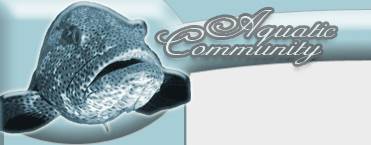Arctic and Antarctic Animals
Arctic animals
The Arctic includes the Arctic Ocean and parts of Russia, Finland, Sweden, Norway, Iceland, Greenland (Denmark), Canada, and Alaska (United States). Consisting of ice-covered ocean and treeless permafrost, the Arctic is home to a very limited number of animals.
Permafrost is soil that stays at or below the freezing point of water year round and such conditions naturally have a significant impact on plant and animal life. Permafrost does for instance limit the opportunities for Arctic animal to dig out dens and burrows, and it favours plants that do not require a deep root system.
On the tundra you can encounter fairly large grazing Arctic animals like caribou and muskox, as well as smaller herbivores like Arctic hare, Arctic ground squirrel, and lemmings. These Arctic animals are preyed on by a few predator species, chiefly Arctic fox, wolverine, wolf and various birds of prey. Ermines can also be encountered in the Arctic.
The Arctic animals are not limited to permafrost land regions; they are also found on the ice and in the surrounding waters. The Arctic marine fauna includes walruses, baleen whales, narwhals, belugas, orcas and several types of seal. The polar bear hails from land-living ancestors but has today adopted a semi-aquatic lifestyle. It can swim in the icy cold Arctic Ocean and prefers to hunt marine mammals from the ice rather than catching land dwellers.
The supporting base for the Arctic marine fauna is phytoplankton and zooplankton which can be found in great amounts in these cold waters every year as the sun returns after the polar winter. The plankton is eaten by small organisms that in turn supports fish and larger aquatic invertebrates, or is eaten directly by baleen whales and other filtering aquatic giants.
Antarctic animals
Surrounded by the Southern Ocean, Antarctica is the, on average, coldest, driest and windiest continent on our planet. Amazingly enough, plants and animals as well as some other organisms have managed to adapt to life in these rugged conditions. Some only spend the summer here while others have found ways to survive the relentless Antarctic winter.
The fauna consists chiefly of mosses, lichen and algae – there are no trees or even bushes on Antarctica. Invertebrate life includes midges, mites, nematodes, springtails, rotifiers, tardigrades and krill. Most Antarctic animals, even fairly terrestrial ones, rely on the sea for feeding and the largest purely terrestrial Antarctic animal is no larger than 12 mm – the flightless midge Belgica Antarctica.
One of the most iconic Antarctic animals is of course the penguin. Many different species of penguin can be found on Antarctica, but only a few of them breed there, including the Emperor Penguin, King penguin, Adélie Penguin, Gentoo penguin, and Chinstrap penguin. The Adélie Penguin breeds farther south than any other penguin, but it is only the Emperor Penguin that dares to breed during the callous Antarctic winter. In addition to penguins, several other birds have found their way to Antarctica, including the Snow Petrel and various species of Albatross. The Snow Petrel travels very far inland and has been spotted at the South Pole.
In the waters around Antarctica you will find a lot of marine mammals who come here to feed on phytoplankton or on animals higher up in the food chain. Antarctic krill, which congregates in large schools, is the keystone species of the ecosystem of the Southern Ocean. Thanks to the krill, you can encounter animals like fur seals, leopard seals, Weddell seals, orcas, and the gigantic blue whale off the Antarctic coast. These waters are also the home of the Colossal squid (Mesonychoteuthis hamiltoni)
